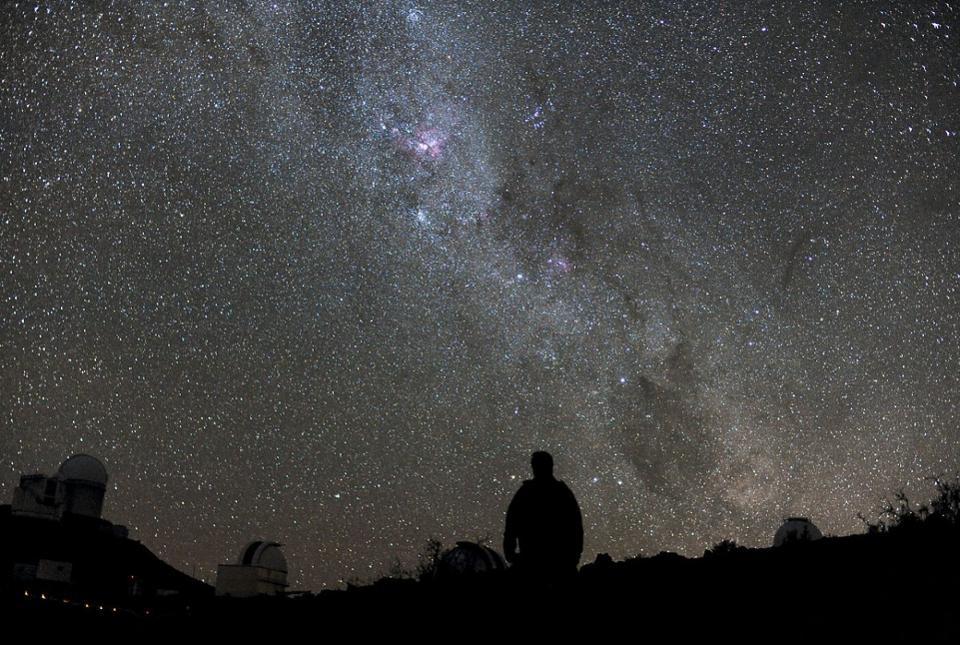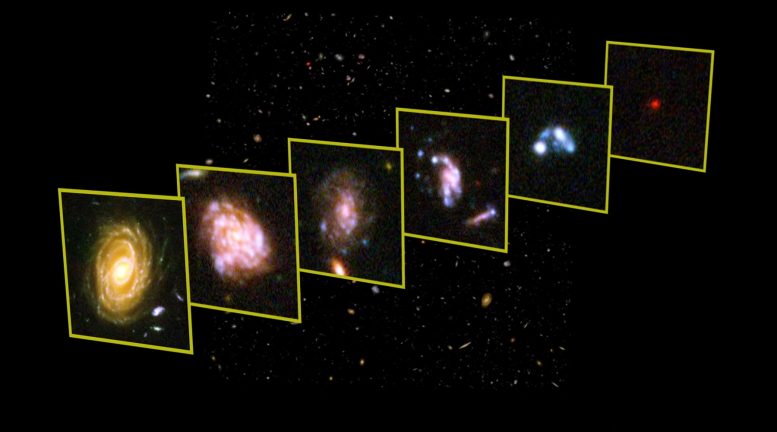 Distant galaxies, like those found in the Hercules galaxy cluster, are not only redshifted and receding away from us, but their apparent recession speed is accelerating. Many of the most distant galaxies in this image are receding from us at speeds that appear to exceed the speed of light. We will never be able to reach any of the ones presently located more than 18 billion light-years away. (Credit: ESO/INAF-VST/OmegaCAM. Acknowledgement: OmegaCen/Astro-WISE/Kapteyn Institute.)
Distant galaxies, like those found in the Hercules galaxy cluster, are not only redshifted and receding away from us, but their apparent recession speed is accelerating. Many of the most distant galaxies in this image are receding from us at speeds that appear to exceed the speed of light. We will never be able to reach any of the ones presently located more than 18 billion light-years away. (Credit: ESO/INAF-VST/OmegaCAM. Acknowledgement: OmegaCen/Astro-WISE/Kapteyn Institute.)KEY TAKEAWAYS
- The universe is expanding, with every galaxy beyond the Local Group speeding away from us.
- Today, most of the universe's galaxies are already receding faster than the speed of light.
- All galaxies currently beyond 18 billion light-years are forever unreachable by us, no matter how much time passes.
- Our universe, everywhere and in all directions, is filled with stars and galaxies.
 The Milky Way, as seen at La Silla observatory, is a stunning, awe-inspiring sight to anyone, and offers a spectacular view of a great many stars in our galaxy. Beyond our galaxy, however, are trillions of others, nearly all of which are expanding away from us. (Credit: ESO / Håkon Dahle)
The Milky Way, as seen at La Silla observatory, is a stunning, awe-inspiring sight to anyone, and offers a spectacular view of a great many stars in our galaxy. Beyond our galaxy, however, are trillions of others, nearly all of which are expanding away from us. (Credit: ESO / Håkon Dahle)- From our vantage point, we observe up to 46.1 billion light-years away.
 As long as the light from any galaxy that was emitted at the start of the hot Big Bang 13.8 billion years ago would have reached us by today, that object is within our presently observable universe. However, not every observable object is reachable. (Credit: F. Summers, A. Pagan, L. Hustak, G. Bacon, Z. Levay, and L. Frattere (STScI))
As long as the light from any galaxy that was emitted at the start of the hot Big Bang 13.8 billion years ago would have reached us by today, that object is within our presently observable universe. However, not every observable object is reachable. (Credit: F. Summers, A. Pagan, L. Hustak, G. Bacon, Z. Levay, and L. Frattere (STScI))- Our visible universe contains an estimated ~2 trillion galaxies.
 The Hubble eXtreme Deep Field (XDF) may have observed a region of sky just 1/32,000,000th of the total, but was able to uncover a whopping 5,500 galaxies within it: an estimated 10% of the total number of galaxies actually contained in this pencil-beam-style slice. The remaining 90% of galaxies are either too faint or too red or too obscured for Hubble to reveal. (Credit: HUDF09 and HUDF12 teams; Processing: E. Siegel)
The Hubble eXtreme Deep Field (XDF) may have observed a region of sky just 1/32,000,000th of the total, but was able to uncover a whopping 5,500 galaxies within it: an estimated 10% of the total number of galaxies actually contained in this pencil-beam-style slice. The remaining 90% of galaxies are either too faint or too red or too obscured for Hubble to reveal. (Credit: HUDF09 and HUDF12 teams; Processing: E. Siegel)However, most of them are already permanently unreachable by us.
TO READ MORE, CLICK HERE...
No comments:
Post a Comment